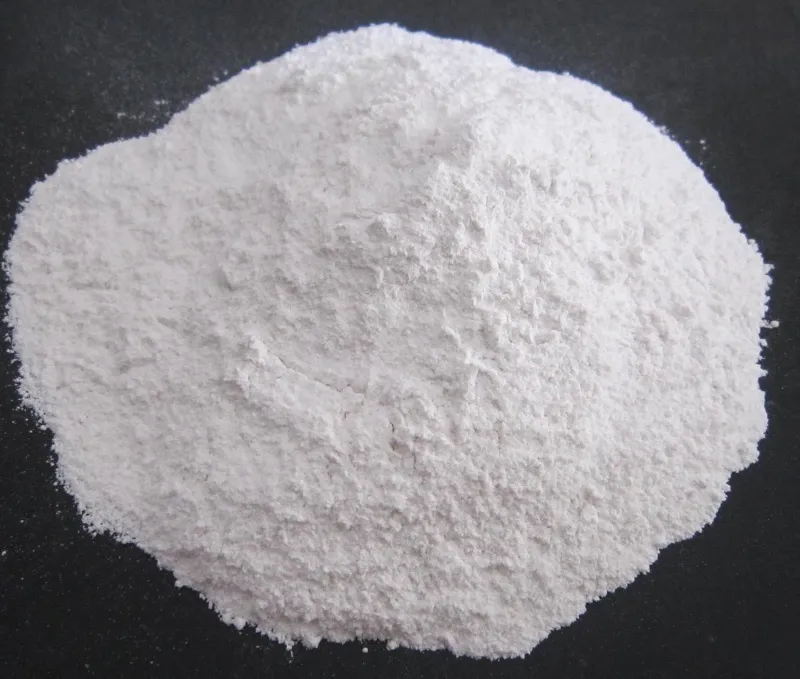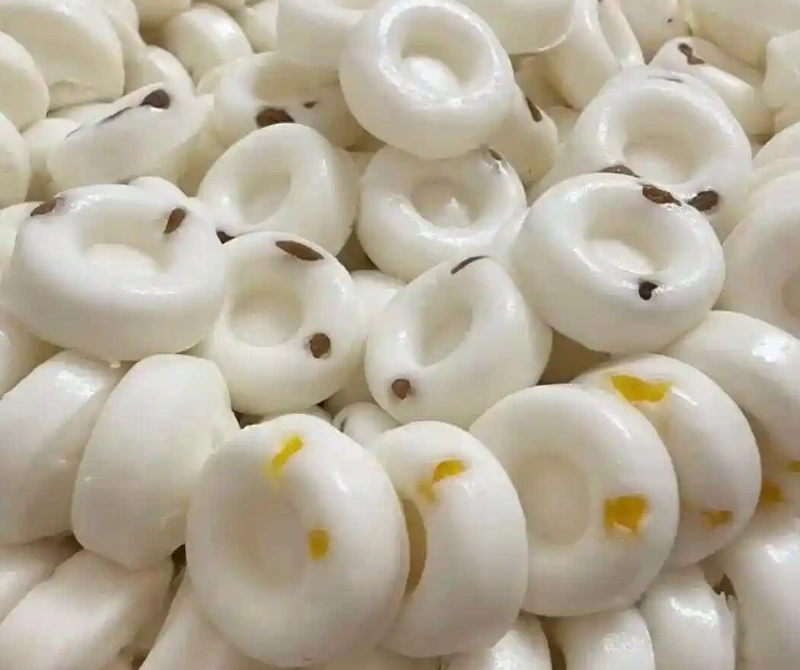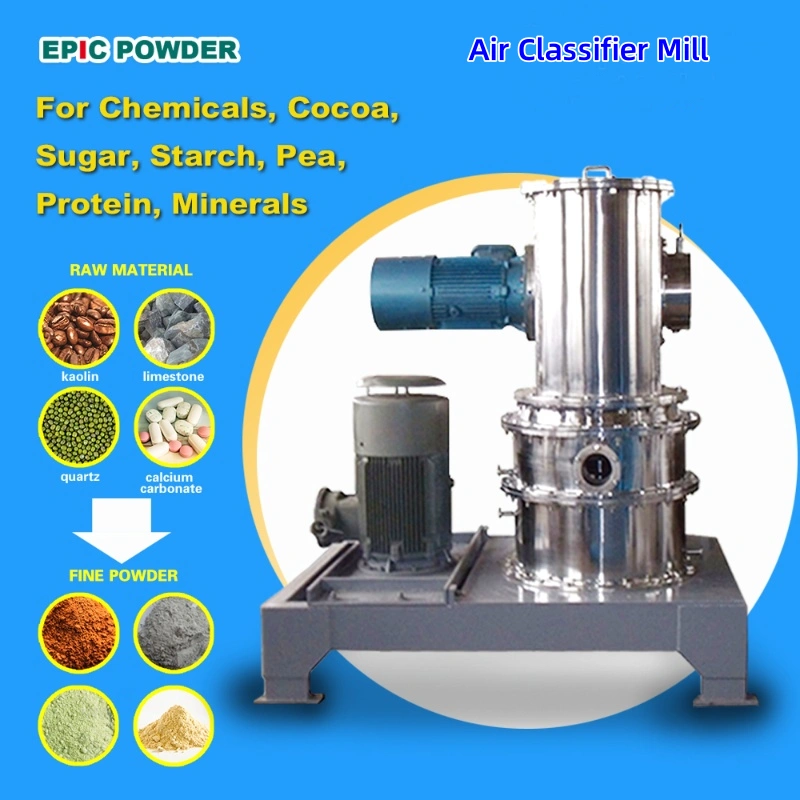Starch, a crucial natural polysaccharide, is widely used in food processing, papermaking, textiles, pharmaceuticals, and chemicals. However, traditional starch often cannot meet the physical and chemical demands of modern industries. To address this, modified starch has been developed. By using physical, chemical, or enzymatic methods to ModifiedStarch, its functional properties can be enhanced, allowing it to serve a broader range of industrial needs. Meanwhile, classification grinding technology, an essential tool in powder processing, plays a critical role in the production of modified starch.

Basic Concept of ModifiedStarch
Modified starch refers to starch that has been altered through physical, chemical, or enzymatic methods to change its original structure and properties, making it more functional for various applications. Common modification methods include heat treatment, acid treatment, oxidation, and crosslinking. The modified starch possesses improved stability, better gelation properties, higher solubility, heat resistance, and better water retention, making it valuable in food, pharmaceuticals, and other industries.
Types of ModifiedStarch
Currently, there are over 2,000 varieties and specifications of modified starch. Classification is typically based on the method of modification:
- Physical Modification
Pre-gelatinized (α-amylose) starch, γ-ray, ultra-high-frequency radiation treated starch, mechanical grinding treated starch, wet heat treated starch, pre-gelatinized starch, lipid-modified starch, smoked starch, extruded starch, metal ion-modified starch, ultra-high-pressure radiation modified starch, etc. - Chemical Modification
Starch treated with various chemicals. There are two main categories:- Molecular weight reduction: Acid hydrolyzed starch, oxidized starch, baked dextrin, etc.
- Molecular weight increase: Crosslinked starch, esterified starch, etherified starch, grafted starch, etc.
- Enzymatic Modification
(Biological modification): Starch treated with various enzymes, such as α, β, γ-cyclodextrin, maltodextrin, amylose, etc. - Composite Modification
Modified starch created using two or more methods. For example, oxidized crosslinked starch or crosslinked esterified starch. Starches modified through composite methods combine the advantages of the individual modification processes.
Additionally, modified starch can be categorized by the production process, such as dry method (e.g., phosphate ester starch, acid hydrolyzed starch, cationic starch, carboxymethyl starch), wet method, organic solvent method (e.g., carboxylic acid starch using ethanol as solvent), extrusion method, and drum drying method (e.g., pre-gelatinized starch made from natural or modified starch).
Applications of Modified Starch

Food Industry
In food processing, modified starch is widely used as a thickener, stabilizer, and gelling agent. It improves the texture and taste of food, extends shelf life, and plays an important role in specialty foods, such as low-sugar and low-fat foods.
Paper Industry
Modified starch is used in papermaking to improve paper strength, flexibility, and surface smoothness, enhancing paper quality.
Textile Industry
In textiles, modified starch serves as an auxiliary for dyes and coatings, improving fabric dyeability and color fastness.
Pharmaceutical Industry
Modified starch is used as a pharmaceutical carrier, improving pharmaceutical release properties and increasing bioavailability.
The Role of ACM Technology in Modified Starch Production

Air classifier mill is a technique that uses grinding equipment to refine and classify materials, commonly used in producing high-performance powders. Its primary function is to optimize material performance by adjusting the particle size and distribution, which is especially important in producing modified starch with specific particle size distributions.
Improving Particle Size Control of ModifiedStarch
The particle size of modified starch is crucial to its performance in end applications. Classification grinding allows precise control over the starch particle size, making it more stable in various applications. For example, in the food industry, smaller particle sizes improve the starch’s solubility and expansion properties, enhancing the taste and texture of food.
Improving the Functionality of Starch
Classification grinding not only reduces particle size but also enhances the starch’s flowability, dispersibility, and binding properties by selecting suitable grinding and classification equipment. This is critical for many industrial applications. In dairy products, beverages, and candy, uniformly fine and functional modified starch significantly improves product quality.
Increasing Production Efficiency
The efficiency of classification grinding lies in its ability to achieve continuous production while maintaining product quality. This is crucial for large-scale production of modified starch, especially as market demand grows. Increased production efficiency helps lower costs and enhances market competitiveness.
Epic Powder
The production of modified starch relies on efficient processing equipment and technology.
ACM grinding is a key tool in enhancing the quality and performance of modifiedstarch. Through precise particle size control and efficient processing, ACM grinding improves the performance of modified starch.
It also boosts production efficiency and supports environmental friendliness. In this context, the powder processing equipment of Epic provides high-quality solutions for modified starch production.
These solutions drive the demand for high-performance materials across industries. As industrial needs continue to evolve, the application scope of modified starch will expand. Air classifier mill grinding technology will play an increasingly important role in this process.
